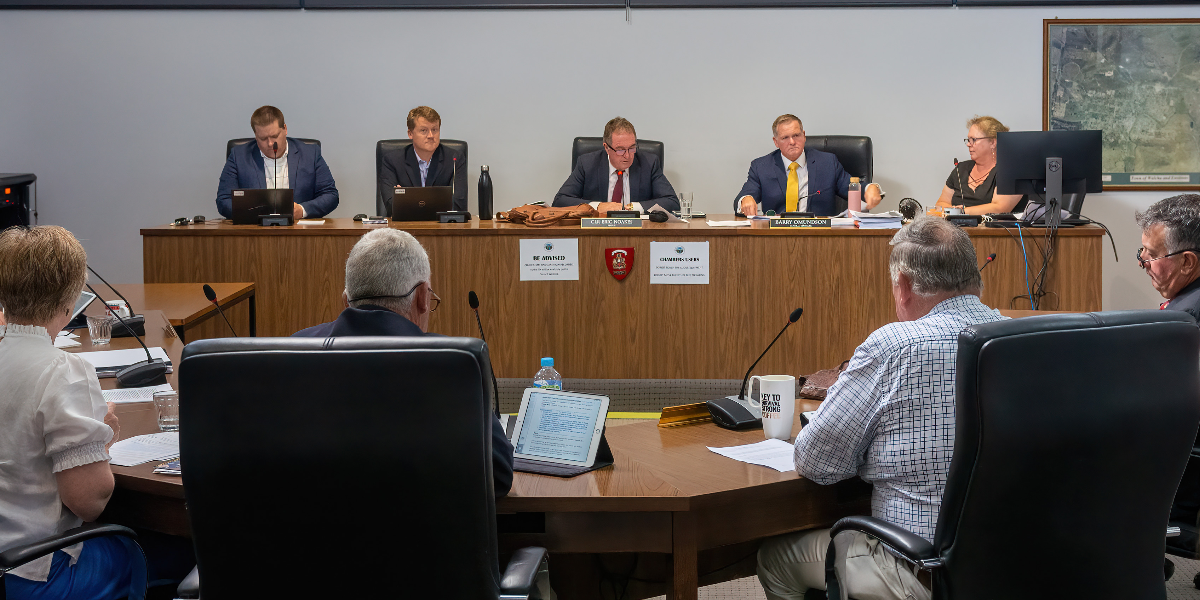Renewable energy developments are dividing locals, but Walcha Council has unanimously voted to keep their voice heard in the ongoing assessment of the the Winterbourne Wind Project at an extraordinary meeting yesterday.
The vote allows them to present an EIS submission to the NSW State Department of Planning, expressing a multitude of concerns regarding the negative social and environmental impacts of wind farm developments in the Walcha area, and it will also highlight a series of errors that Council allege are located within the EIS itself.
Walcha Mayor Eric Noakes described the EIS as being at the heart of “the most contentious issue” that the Council, and the Walcha community itself, had faced in a significant period of time.
“The issue of renewable energy has divided our community like nothing else in my memory,” said Mayor Noakes.
“This EIS is deficient in detail in areas that have ramifications for our community.”
The comments were made in relation to current efforts by Danish energy giant Vestas, who have a majority stake in the Winterbourne Wind Project, to secure construction approval for a wind farm development in Walcha.
The Walcha Council had previously elected to remain neutral, with councillors committing not to give an “objection” or “support” answer to the EIS questionnaire which allows participants to convey their feelings towards the Winterbourne project.
Council also unanimously passed a motion to write to the New South Wales Independent Planning Commission (IPC) “seeking to present to the Commission both in person and locally here in Walcha.”
The motion, raised by Councillor Scott Kermode, was also supported by Councillor Nena Hicks, who expressed to the chamber that the Council has full intention to contribute to “any hearing” that is launched by the IPC.
“We were quite worried in our workshops of our likelihood of getting a seat at any table, bearing in mind that the project stands to have a significant impact on council,” said counsellor Kermode in reference to the motion that would refer the EIS to the Commission.
The Council hopes that by being able to make a submission to the EIS, they will be able to effectively weigh in on the ramifications that the project may have for the Walcha Community.
Community group Voice for Walcha has been one of the most vocal opponents of the Winterbourne Wind project and have held a series of public meetings encouraging scrutiny of the EIS.
“The developer has tabled an inaccurate, incomplete and somewhat erroneous report on the potential impacts to biodiversity values,” the group said in a statement.
“The EIS suggests that [water required for the project] will come from harvestable rights, bores in the area, farm dams or from Walcha Council supply. The scale of this requirement is staggering.”
Doug Landfear, the project director of Winterbourne Wind, said that the company “welcome the council’s comments and look forward to continuing to work with Walcha Council and all stakeholders in the development of the project.”
Over the course of the proceedings, Councillor Gregory Schaffer removed himself from the chamber during these motions due to his pecuniary interest in the matter.
In the event that one local government objection for an EIS is submitted, it will go straight to the IPC for review. Similarly, if fifty members of the Walcha community object to the EIS, it goes to the Department for re-evaluation. An IPC review will delay the project for up to 18 months.
Submissions on the EIS will close on the 23rd of January 2023.
Top image: Walcha Council in session yesterday. (Tom Plevey)

